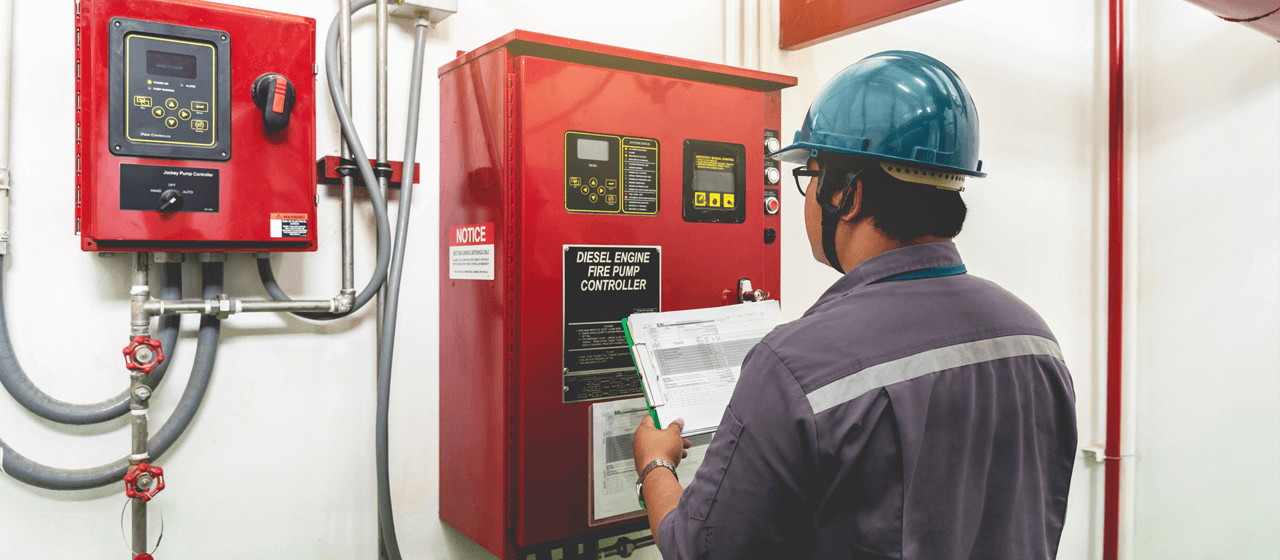Designing Fire Alarm Systems For Industrial Facilities: Unique Challenges And Considerations

The bustling environment of an industrial facility, with its machinery, chemicals, and processes, necessitates a well-tailored industrial fire alarm system. Given the size, scope, and potential hazards present, designing these systems requires a deep understanding of the environment and an ability to anticipate a range of fire risks. Let’s delve into the challenges faced and considerations to keep in mind while creating an effective fire alarm system for industrial settings.
The Industrial Landscape: Beyond the Ordinary
Industrial facilities are a world apart from residential or commercial spaces. These are areas where raw materials transform, machinery operates non-stop, and complex processes run the show. Each facility, be it a chemical plant, manufacturing unit, or processing factory, presents its own set of fire risks. Recognizing the diverse nature of these risks is the first step in designing an effective fire alarm system.
Unique Challenges in Industrial Settings
- Variety of Fire Risks: Depending on the type of industry, there could be risks from flammable gases, electrical equipment, combustible dust, or even reactive chemicals. Each type of fire requires specific detection and response strategies.
- Vast and Complex Spaces: Industrial facilities can span vast areas, with multiple levels, compartments, and zones. Ensuring every nook and corner is covered by the fire alarm system can be a daunting task.
- Environmental Factors: Many industrial processes release steam, smoke, or particulate matter, which can interfere with conventional smoke detectors. Designing a system that distinguishes between these regular emissions and a genuine fire threat is crucial.
Considerations for Effective Design
- Early Detection Is Key: In an industrial setting, early detection can be the difference between a minor incident and a catastrophic event. Therefore, the system should prioritize detecting potential fire threats at the earliest possible stage. This could involve heat detectors in areas where there are regular smoke or flame detectors in spaces with flammable gases.
- Zoning the Facility: Given the size of most industrial facilities, dividing the space into zones can be a strategic move. This way, in case of a fire, it’s easier to identify its location, making the response more swift and targeted. Furthermore, different zones might require different types of detectors based on the risks associated with them.
- Integrated Response Mechanisms: A mere alarm might not be enough for an industrial facility. The system can benefit from being integrated with other response mechanisms, like automatic shut-off valves for gas lines, sprinkler systems, or even machinery shutdown protocols.
- Redundancy and Reliability: Given the potential scale of fire incidents in industrial settings, having redundancies in the system is essential. This ensures that even if one part of the system fails, there are backup measures in place. This redundancy extends to power sources, communication channels, and even the sensors and detectors themselves.
Maintenance and Regular Checks
The best-designed industrial fire alarm system would be ineffective if not regularly maintained. Given the harsh and often dirty environments in many industrial facilities, sensors and detectors can become less effective over time. Regular cleaning, recalibration, and testing are essential to keep the system in optimal condition.
In addition, as the facility evolves — with new machinery introduced or old processes phased out — the fire alarm system might need tweaks and modifications. Regular reviews of the system in light of any changes in the industrial environment ensure that it remains effective and relevant.
Collaborating with Experts
One of the best ways to ensure the design and implementation of an effective fire alarm system is by collaborating with experts. These could be fire safety consultants, representatives from the local fire department, or even specialized industrial fire alarm system providers. These experts can bring in insights from their experiences, understanding of regulations, and knowledge of the latest technologies and solutions available.
Looking Ahead: Adapting to Technological Advancements
With the rapid advancements in technology, the fire safety industry is continuously evolving. Newer, more effective sensors are being developed, communication systems are becoming more robust, and integration capabilities are expanding.
For industrial facilities, it’s crucial to keep an eye on these advancements and be ready to adapt. This doesn’t always mean overhauling the entire system. Sometimes, integrating a new type of sensor or upgrading the communication backbone can significantly enhance the system’s effectiveness.
Prioritizing Safety in Complex Environments
Designing an industrial fire alarm system is no small feat. It requires a deep understanding of the industrial environment, a forward-thinking approach, and a commitment to safety above all else. With the right considerations, collaborations, and a finger on the pulse of technological advancements, industrial facilities can ensure that they are well-prepared to detect and respond to fire threats, protecting both their assets and their invaluable human resources.
